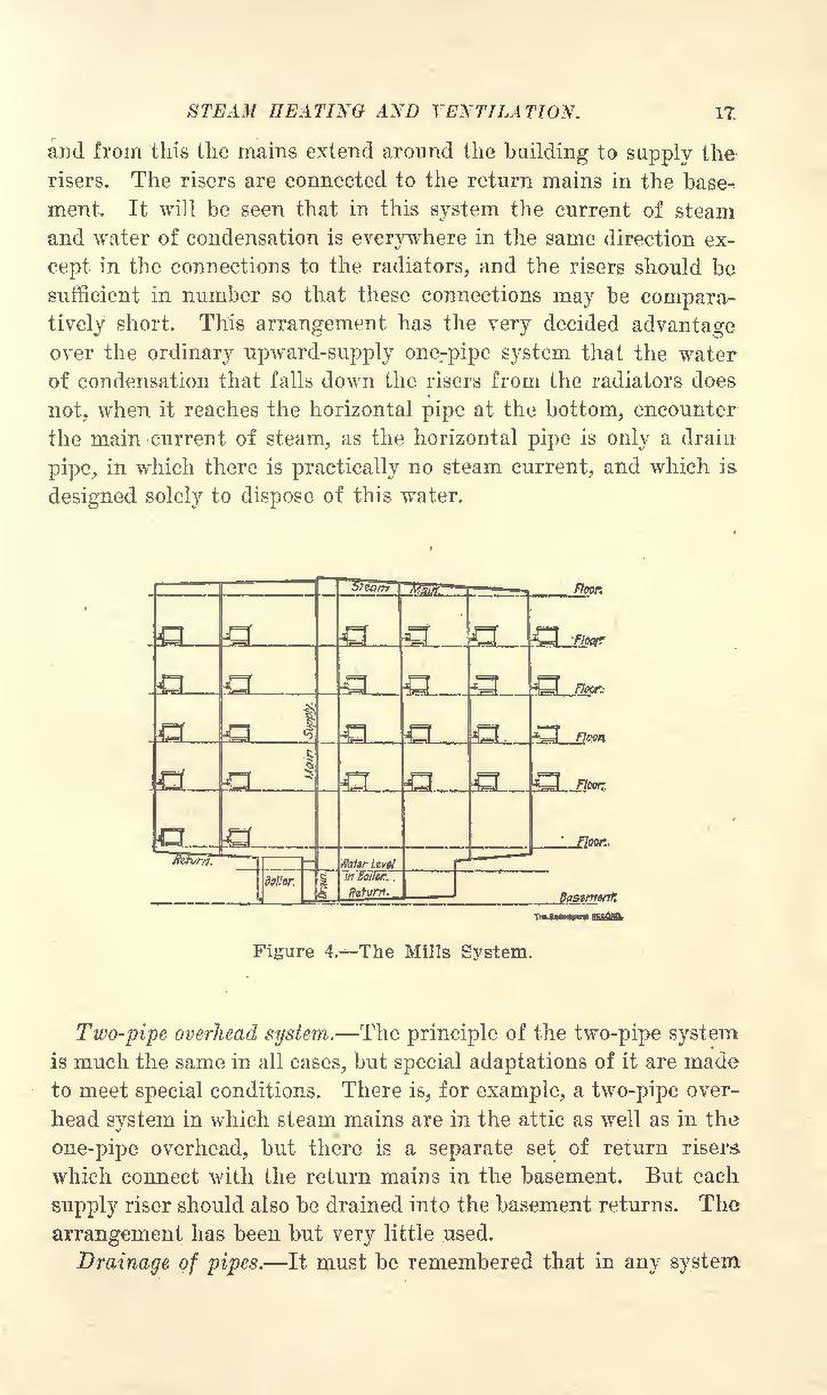and from this the mains extend around the building to supply the risers. The risers are connected to the return mains in the basement. It will be seen that in this system the current of steam and water of condensation is everywhere in the same direction except in the connections to the radiators, and the risers should be sufficient in number so that these connections may be comparatively short. This arrangement has the very decided advantage over the ordinary upward-supply one-pipe system that the water of condensation that falls down the risers from the radiators does not, when it reaches the horizontal pipe at the bottom, encounter the main current of steam, as the horizontal pipe is only a drain pipe, in which there is practically no steam current, and which is designed solely to dispose of this water.
Two-pipe, overhead system.—The principle of the two-pipe system is much the same in all cases, but special adaptations of it are made to meet special conditions. There is, for example, a two-pipe overhead system in which steam mains are in the attic as well as in the one-pipe overhead, but there is a separate set of return risers which connect with the return mains in the basement. But each supply riser should also be drained into the basement returns. The arrangement has been but very little used.
Drainage of pipes.—It must be remembered that in any system

